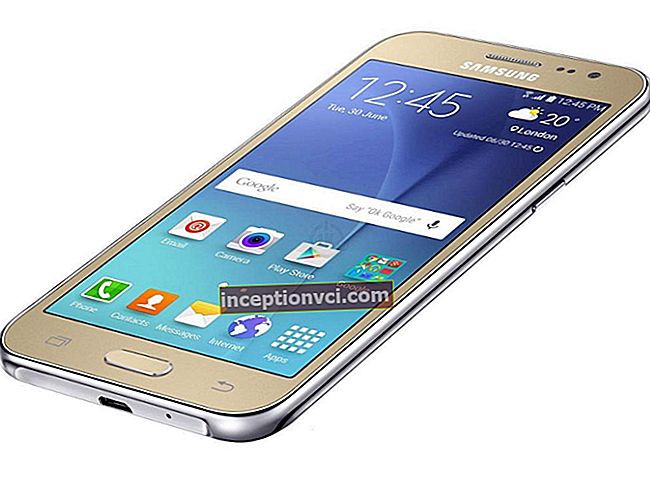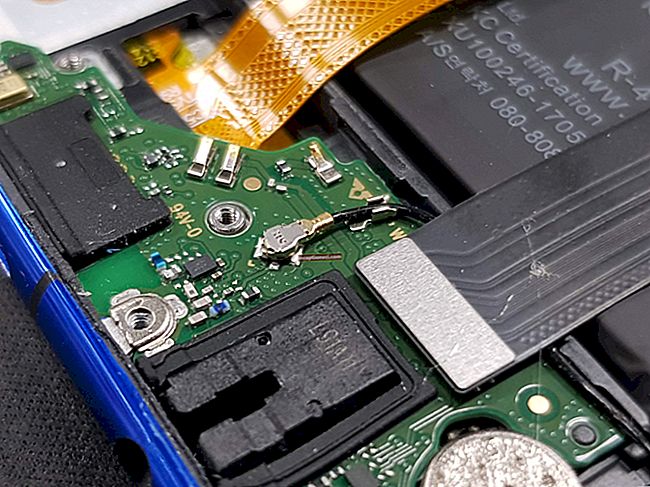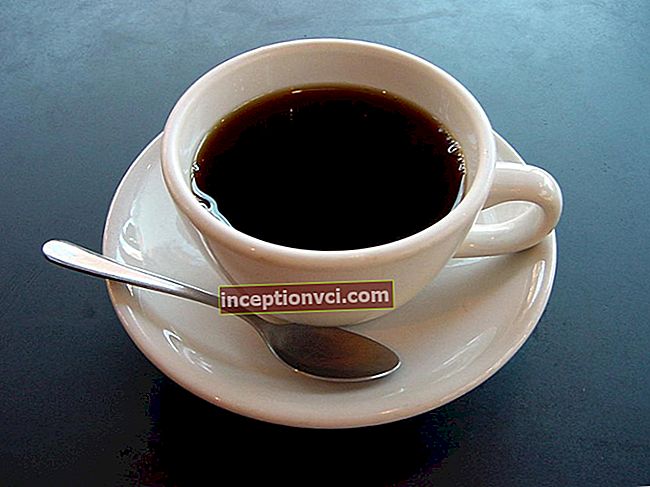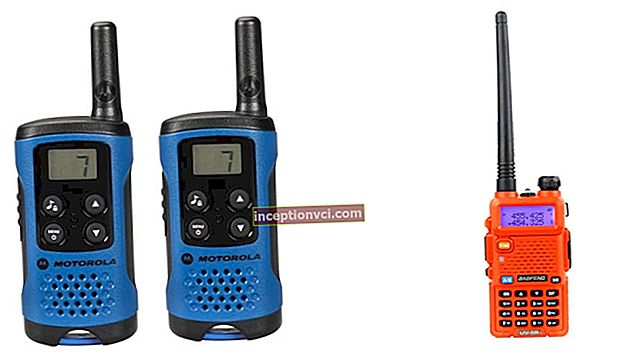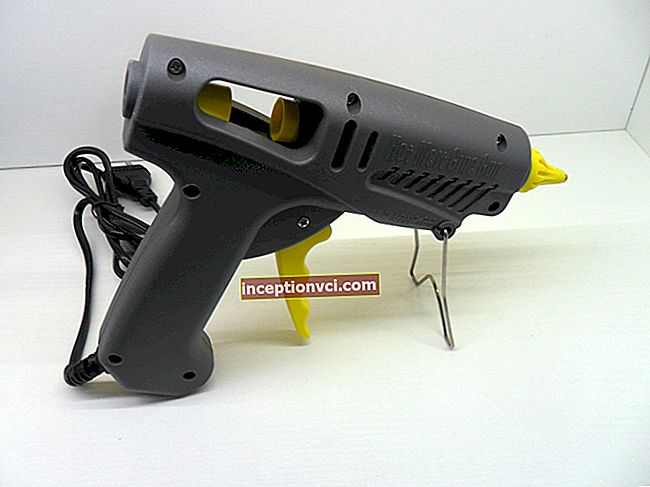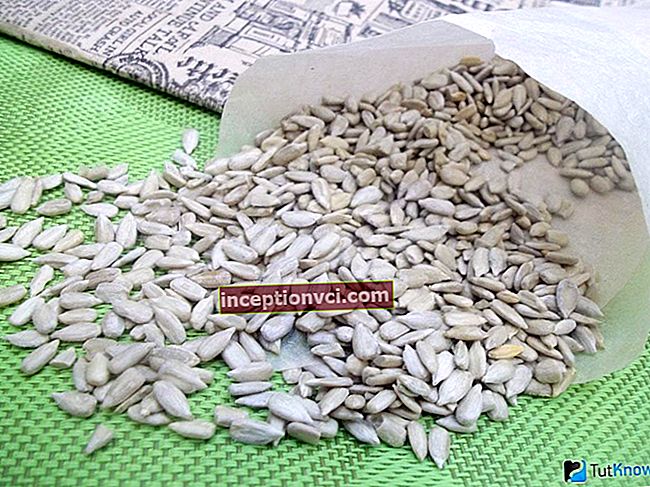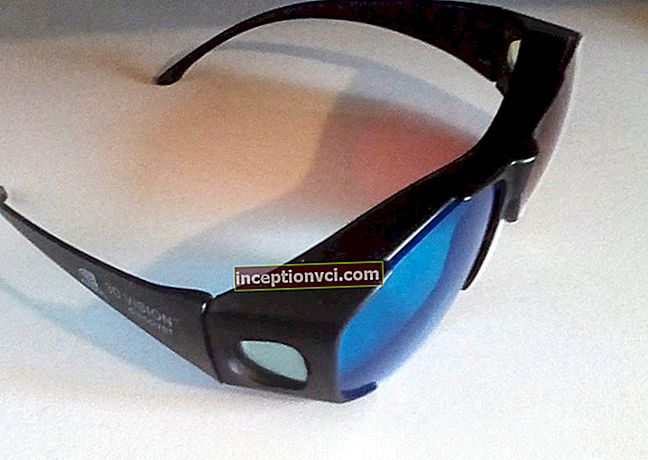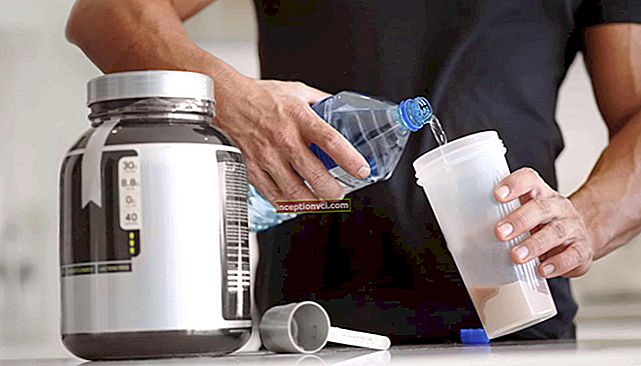In one form or another, devices similar to today's tablets began to appear for a long time. You can recall, for example, the Nokia Internet Tablet line, announced back in May 2005. Or a class of UMPC devices (Samsung Q1, Asus R2H, etc.), which have never been widely adopted.
However, the real beginning of the era of tablets can be called the appearance of the Apple iPad model in January 2010. At that time, there was not even a rough idea of what such devices are needed for, how to use them, etc. But the device turned out to be so thoughtful and technically successful that it instantly became widespread. We also need to give credit to the app developers. For the device, more and more new applications began to appear at a high speed, and everyone began to find certain advantages and certain models of use for themselves in the tablet.
There are fewer and fewer people who are skeptical about tablets. Moreover, it is quite difficult to find those who are unequivocally dissatisfied with such devices after the purchase. Children are delighted with these gadgets. Not burdened with extensive experience in using a keyboard and mouse, due to their age, they literally grasp the principle of tactile control of tablets on the fly. And if you start the game, then it becomes very difficult to distract them from the device.
Required minimum
Those words of praise for tablets that we applied above, of course, do not apply to all devices. So that the tablet does not disappoint, but really becomes a pleasant gadget, the device must be of high quality. When buying a tablet from well-known brands such as Samsung, Acer, Asus, Dell, HTC, of course, Apple, etc., you can most likely expect the device to be really good. By "good" we mean that the tablet will have a high-quality screen with wide viewing angles, a powerful processor that can cope with both 3D games and smooth playback of videos of different, including HD, formats, an up-to-date operating system, so that you did not have any problems with finding suitable applications, support from the manufacturer, etc. A lot of products from various Chinese manufacturers usually cannot boast of such a set of characteristics. Although there are often exceptions. In general, we recommend that you carefully approach your choice if you want to save money when buying.
iOS and Android
Among the operating systems for tablets at the moment, only two can be unambiguously distinguished: iOS, which is used in the iPad 1/2 tablets, and Android, on the basis of which a huge number of devices from various brands are produced. It is these operating systems that are the most widespread today and it is for these operating systems that the largest number of really high-quality applications and games are released.
Almost all the time, the question is asked, which is better - an iPad 1/2 or a high-quality tablet based on Android. There are supporters of both those and other solutions. It is very difficult to answer unequivocally, and even considering both those and other devices in our test, we will not give an unambiguous assessment. iPads 1/2 are often attracted by their thoughtfulness, attention to detail and refinement. Android-based devices are often more equipped, they have more opportunities for personalization and customization, they are not burdened with some "proprietary" limitations inherent in the iPad. By the way, we want to dispel the sometimes encountered myth that to use Android tablets you need to be some kind of advanced user or techno maniac. This is absolutely not the case.
Note that it is most preferable if a modern Android tablet will run on the new version of Android OS 4.X.If the tablet runs on Android 3.X, this is also not bad, but if the Android 2.X version is installed and the manufacturer does not plan to update the firmware to a more modern version, then we would warn against buying such a tablet.
Everything on the shoulder
Due to its versatile capabilities, there are many ways to use the tablet. Reading the Internet on the couch, browsing social networks in a cafe, playing music, movies, reading books, navigating, playing games - everyone chooses what he needs most. Curiously, statistically, the most popular use for tablets is browsing the web on your home couch.
Many people mistakenly believe that a tablet can replace a computer and, in particular, a laptop. Perhaps someday it will happen, but at the moment it is not a substitute for them. Don't choose a tablet over a laptop. You need to be aware that a tablet is not a working tool, but rather a cool toy.
It is very difficult to cover all the most interesting devices in one test. But we can say with confidence that the presented models are among the best in our market. On the following pages, you will find a description of the experience and personal impressions of using the most famous tablet in the world (iPad 2), a tablet from an expert in the field of Android gadgets (Samsung GalaxyTab 10.1) and a couple of very unusual models from Asus.
Asus Eee Pad Transformer Prime TF201, Asus Eee Pad Transformer TF101G
Asus tablets are by far the most uncommon among all of our testers. And in all respects. Let's try to figure out whether this is a plus or, nevertheless, a minus. Asus has been experimenting with device form factors for a long time. Let's remember the same Asus Eee Pad Slider. Its keyboard is with you all the time, but it is thick and, as experience has shown, the attachments of the screen to the keyboard loosen over time. Taking into account these shortcomings, the manufacturer endowed the Transformer series tablets with a removable keyboard, and even with a battery. That is, when you do not need the keyboard, it can be removed. And when the charge level of the main device runs out - just plug it in, and the energy will be pumped into the tablet. We deliberately took for the test two versions of the "transformers" Asus TF101 and Asus TF201, since they will be available in stores for a long time. According to the manufacturer, only the TF101G will ship with a built-in 3G modem. But Asus Prime is almost the only device in which the keyboard is not only a typing tool, but also a docking station. In addition to the extra battery, it has a full-size USB connector and a second card reader. It is also worth considering that the keyboard itself is a reliable screen protector. And the fastening of the tablet in the dock acts as a leg when opening. There is a version without a docking station on sale (cheaper by $ 150), but from our point of view, it is less interesting. When you turn on the Asus Prime TF201, you are greeted by the Android desktop version 4.0.3. Under the hood is the quad-core Tegra 3 (Prime is the first tablet on this processor). He also has 1 GB of RAM and 32 GB (sometimes 64 GB) of disk space. All this is headlong enough for editing documents, watching movies in high quality and launching a large number of applications in the background. Of all the Android devices we tested, the Prime TF201 transformer is the most productive. The TF101G model has a 2nd Tedga, 16 GB of memory (maximum 32 GB) and also 1 GB of RAM. The G index means the presence of the ZS-module. As we have already said, Asus does not plan to supply the ZS-version of Prime to Ukraine. According to the manufacturer, buyers of a tablet, as a rule, have a smartphone with Internet access and will no longer buy a second connection. Moreover, most smartphones can be an access point, broadcasting mobile traffic over Wi-Fi. The decision is controversial, however, for those who wish in Ukraine, the first generation of Eee Pad-transformers with 3G support is available. The TF201's case is sleek and made of metal. In the younger model TF101G, the surface, on the contrary, is plastic and embossed in order to avoid slipping out of the hands. It remains only to decide which case is more convenient for you.Although rough, like the 101, and thin, like the 201, seems to be the best combination. The "junior" also has fixed USB port covers, and the new one has ordinary plugs that can be easily lost. Rightly deciding that a regular QWERTY keyboard isn't enough to control an Android device, Asus has optimized it perfectly. Where the [win] button was located is the [Note] button. The top row, where the function keys were usually located, was replaced with buttons for controlling the player, adjusting the screen brightness and volume, turning on / off Wi-Fi and Bluetooth, locking the keyboard and turning the touchpad on / off. But the arrows are quite small and "bunched up" with the right shift and the duplicate [Fn]. But there is a sufficient distance between the buttons and the dimensions of the touchpad itself, which does not support gestures and multitouch. The touch screen, keyboard and touchpad create some kind of redundancy, but you quickly get used to it depending on the situation and choose the most convenient solution. Both models have two cameras. For video calls - 1.2 megapixels each. But the external cameras are different: the Prime has 8 megapixels, and the TF101G has 5 megapixels, while the latter does not have a flash. In terms of battery life, the two generations of tablets have a number of differences. TF201 (in balanced mode) holds a charge for 18 hours, versus 16 hours for TF101G. Both tablets have a charge indicator in the form of a light bulb near the charging connector. And in the Android tray, only the TF201 has a separate indicator for each battery. The TF201 also has a choice of three power plans. A dubious advantage, since the difference in battery life does not differ significantly. But the screen mode called Super IPS + is a big boon, especially in the sun. The preinstalled software deserves special attention. Polaris Office allows you to not only open but also edit MS Office documents. There is My Library - a book reader, ASUS WebStorage cloud storage service and others. However, we must also make a remark. Purely custom, with a stone in the garden of Android, but still. The touch buttons "Back" and "Home" are two-fold. On the one hand, this allowed us to make a thin frame and give the maximum area for the screen, on the other hand, when you hold the tablet in your hands (without a dock), false presses often occur. Thus, the following conclusion can be drawn. Both generations of transformers are good in their own way. The "junior" TF101 has more communications and a peculiar case format. The "older" TF201 has better work with the OS and smaller dimensions with better performance. Which one to choose, you need to look based on preferences of use, well, and the size of the wallet. Pros and cons of Asus TF201 + unusual but successful form factor + high-quality assembly and body materials + high performance + additional battery in keypad + full size USB + preinstalled Android 4.x - short battery life without additional battery - The USB plug can get lost easily. Pros and cons of Asus TF101G + unusual but successful form factor + additional battery in keypad + full size USB + 3G support - insufficient screen brightness - the large weight of the tablet itself. Apple iPad 2 A1396 Wi-Fi + 3G When we just started the tablet test, I was already looking forward to the opportunity to play with the second iPad for a couple of weeks. Actually, for me iPad is a link in the chain "iPhone - iMac". Yes, yes, I use these pieces of iron every day and am happy with them. While doing the test, I tried to find answers to the questions: do I need an iPad, can I comfortably use it without other i-devices, and why not Android? Taking the "stub" in my hands, I immediately remembered the main arguments, without which no "holivar" can do. There is no support for flash, video must be converted to apple format, music can only be uploaded through itunes, closed file system ... With full responsibility, I declare: THIS IS TRUE! But! This is not a disadvantage, but a virtue.And then I met an acquaintance who said that the iPad was bullshit, since you can't play Megapolis on it on Odnoklassniki. It is worth noting that at the moment the Megapolis application for the iPad, written with crooked hands, has been released, and this is the only application that slows down on the iPad, but everyone who logs into the game from it is given two units of game currency. So, about the shortcomings. Anyone who starts using i-gadgets experiences a breakdown from the inability to do the way they want, and not the way Apple said. But let's look at it from a different angle. A large number of minds racked their brains in order to make a device that would take care of its owner. For example, opening the "Video" application, we see not a list of files with left names, but movie covers, by clicking on which, you can read the description, the names of the actors and the director. Moreover, if you interrupted viewing, when you restart it, playback will start from where you stopped. The same feature is implemented for podcasts. It should be noted that buying a film with a Russian or Ukrainian track is very problematic. That is, we are left with two options: search for it on the Internet (but you know that piracy is evil) or convert it yourself. Moreover, there are a lot of editors who can not only convert the video into the desired format, but also pull a poster and a description of the film from IMDB. As for the organization of the music collection, it has been written about many times. I can only say that Android has also moved away from the file trash and connects to the PC as an MTP device, synchronizing music with a media player. The iCloud cloud service deserves special attention. They wrote a lot about him, but I will focus on the moments that I liked the most. Photo Stream is one of the best cloud features. It is clear that you can store contacts, notes, calendars and even backups of the device there, but this is not new, and the same Android has it through a google account. So, about organizing the exchange of photos. At Google, this is happening massively and uncontrollably. All of the albums on Picasa are visible on the tablet, but are pulled from the Internet. It is possible to make an album available locally, but if there are many of them, there is an eerie confusion. Apple took a different route. Photos are synchronized between devices connected to the cloud for a period of 30 days, or individual albums that can be specified manually. And also, if you have bought something from the AppStore at least once, the application will be automatically downloaded to your i-device. It doesn't matter if you bought from a PC, iPhone or iPad - it will be everywhere. And there are thousands of such useful little things in the "apple" ecosystem, and it is they that determine the convenience of using both individual devices and their complex as a whole. I want to finish with a message to those undecided. If you are ready to give up the desire to control every byte of RAM and enjoy what someone thought for you and created a device with an excellent intuitive shell, then you are definitely in the Yabloko company. If not, welcome to the camp of Android users. An exciting journey awaits you in the park of non-closing and memory-eating programs, viruses in the official market and buggy software. I promise you will never leave the feeling of a beta tester and the desire to finalize your own tablet. "Pros and cons" + great screen + huge number of applications + stable operation and no brakes - does not support AdobeFlash - binding to proprietary software and formats Samsung Galaxy Tab 10.1 Samsung was the first global brand to embrace the idea of Android tablets. But it was with the release of the updated Galaxy Tab 10.1 that tablets from the category of "big smartphones" moved into the category of serious devices. To be honest, the first Android tablets still give me mixed feelings. In fact, these are large smartphones that Samsung hastily released to compete with the then first iPad. Decent competition, however, did not work out. However, that all changed with the release of Android 3 Honeycomb. I will name only the most significant advantages, by the way, successfully implemented in the Samsung Galaxy Tab 10.1. Firstly, the third Android allowed creating devices with a higher resolution screen and, as a result, with a larger diagonal. As a matter of fact, the first 10-inches on Android appeared only after the release of Honeycomb. But the main thing is not even this, but the fact that the "troika" utilizes the desktop space more rationally. For example, in addition to application icons, large and very functional widgets have appeared, which you can work with without even opening the application itself. In my opinion, this is an important advantage of modern Android tablets, including over the notorious iPad. Secondly, the perennial problem of a motley fleet of Android devices has received a solution in the “troika”. The system has completely gone from the "iron" buttons, in most tablets there are only power and volume buttons. Yes, manufacturers have done and are doing their own assemblies of the system with proprietary shells and unique interfaces. But all the control buttons are exclusively virtual and are always in their places. Thirdly, Android tablets are no longer smartphones and have forgotten how to make calls. Probably, this is still good, because hardly anyone will use them as a phone. SlM-card in GSM-versions of devices is needed to access the mobile Internet and send SMS. Yes, yes, with short messages, unlike the iPad, tablets on the troika are all right. Like everyone in our comparison test, the Samsung Galaxy Tab 10.1 measures about 10 inches diagonally. To some, this will seem a lot. Indeed, the dimensions and weight of the device are such that it is unlikely to be able to replace your smartphone (yes, in fact, it does not seek). But the Galaxy Tab is perfect for those who are tired of lugging around a laptop, even the most ultraportable. For most typical office tasks (including web surfing, working with documents and e-mail), the capabilities of the tablet are enough. Under the hood, the tablet has a dual-core ARM Cortex Tegra 2 processor with a frequency of 1 GHz. This is enough not only for watching videos of even the highest definition, but also for three-dimensional computer games. To be honest, for me tablet games have always been associated with something like Angry Birds, Cut the Rope and Swampy the crocodile. I never expected to see the legendary GTA (Grand Theft Auto) or Brothers In Arms 2 on the touch screen. And although I haven't played computer games for a very long time, I decided to change my principles and spent a couple of evenings in criminal showdowns. Fortunately, completely virtual. I would also like to say about the device screen. It uses a Super PLS matrix, which is a kind of improved (in terms of image brightness and viewing angles) analogue of e-IPS (used in many other high-quality tablets) and has approximately the same cost. Evaluating the color rendition and wide viewing angles is completely hampered by the soiled glossy coating of the screen. But, one way or another, the stock of brightness is enough even for using the tablet in bright sunlight. At the same time, the tablet demonstrates excellent battery life. Taking into account the fine tuning options for power consumption schemes, energy saving modes, etc., with occasional use, the tablet can be charged only a few times a week. Personally, it will be very interesting for me to try this tablet after updating to Android 4. Unfortunately, there are no official firmwares for the new operating system for Galaxy Tab 10.1 (GT-7500) yet. However, at your own peril and risk, you can try unofficial firmware created by enthusiastic users. "Pros and cons" + high-quality screen with plenty of brightness + high performance + small dimensions and weight + 3G support - there is no possibility of expanding the internal memory - non-standard interface connector How we ranked the tablets Due to the fact that the tablets presented in our test are based on different operating systems, it is rather difficult to correctly compare their performance, but we nevertheless selected several cross-platform synthetic tests - SunSpider 0.9.1 and GLBenchmark. The rest of the test applications SuperPi, AnTuTuBenchmark, BulletBenchmark were used to compare performance exclusively between devices based on the Android operating system. The battery life was measured by performing identical tasks on devices: playing a movie, surfing the web, playing music, etc.Before measuring in all devices, we carried out two full-fledged discharge-charging cycles of the batteries. In the case of Asus tablets, the duration of the work is measured both for individual tablets and for tablets with attached keyboards (additional batteries are built into the keyboards of these tablets). When evaluating devices such as tablets, in our opinion, the subjective assessment of the user is of great importance. The measurement results can be found in the screenshots below. 
















